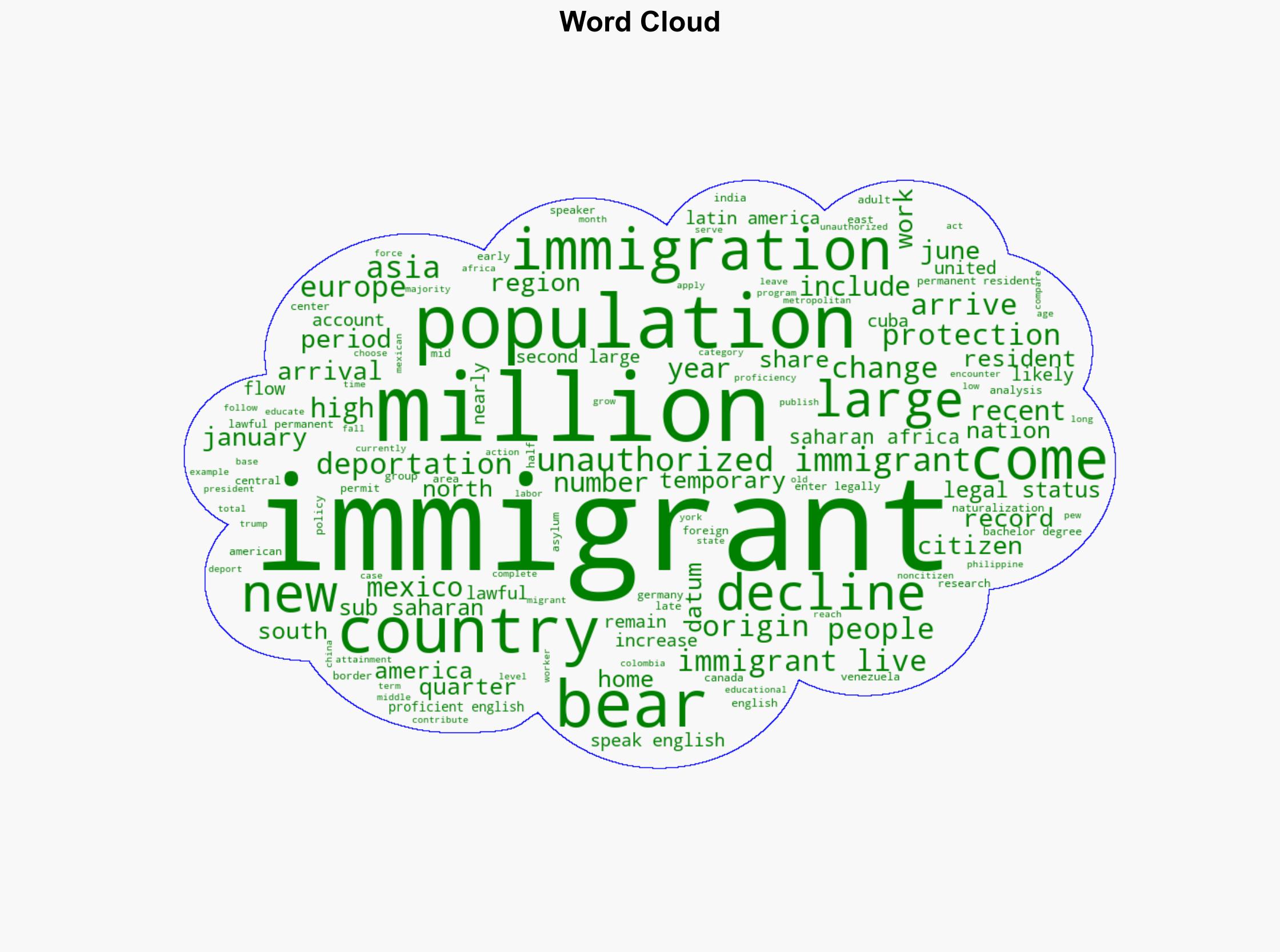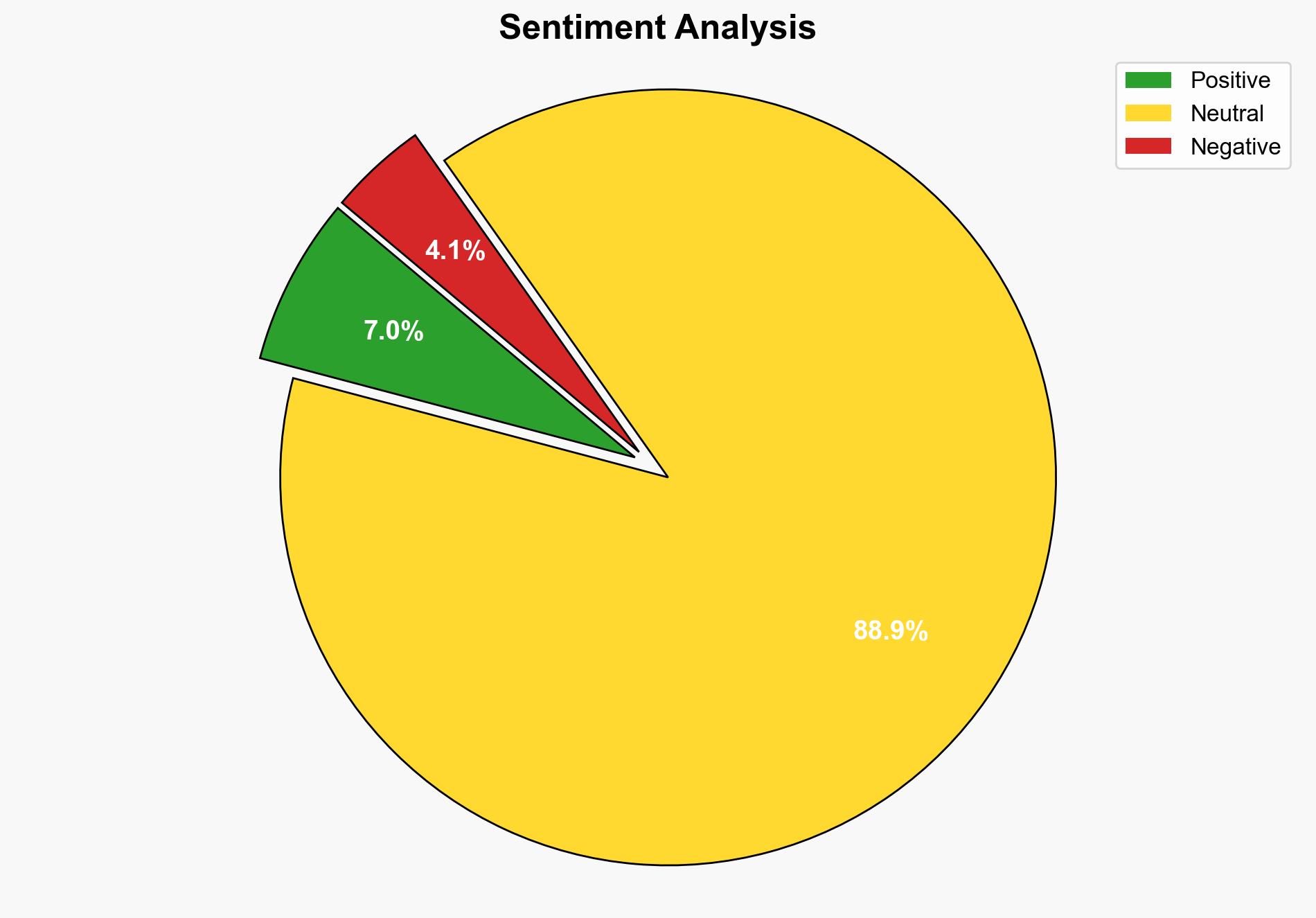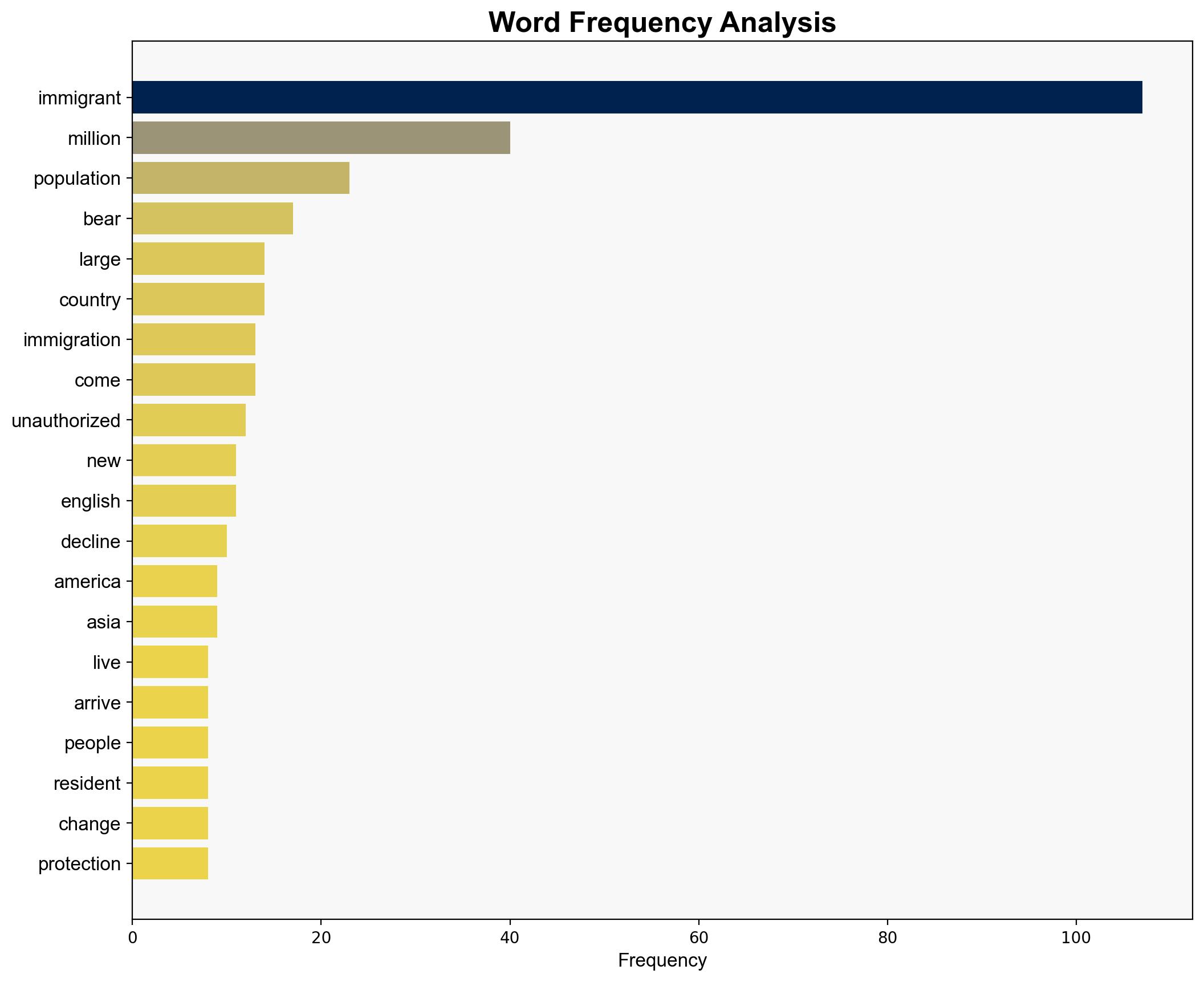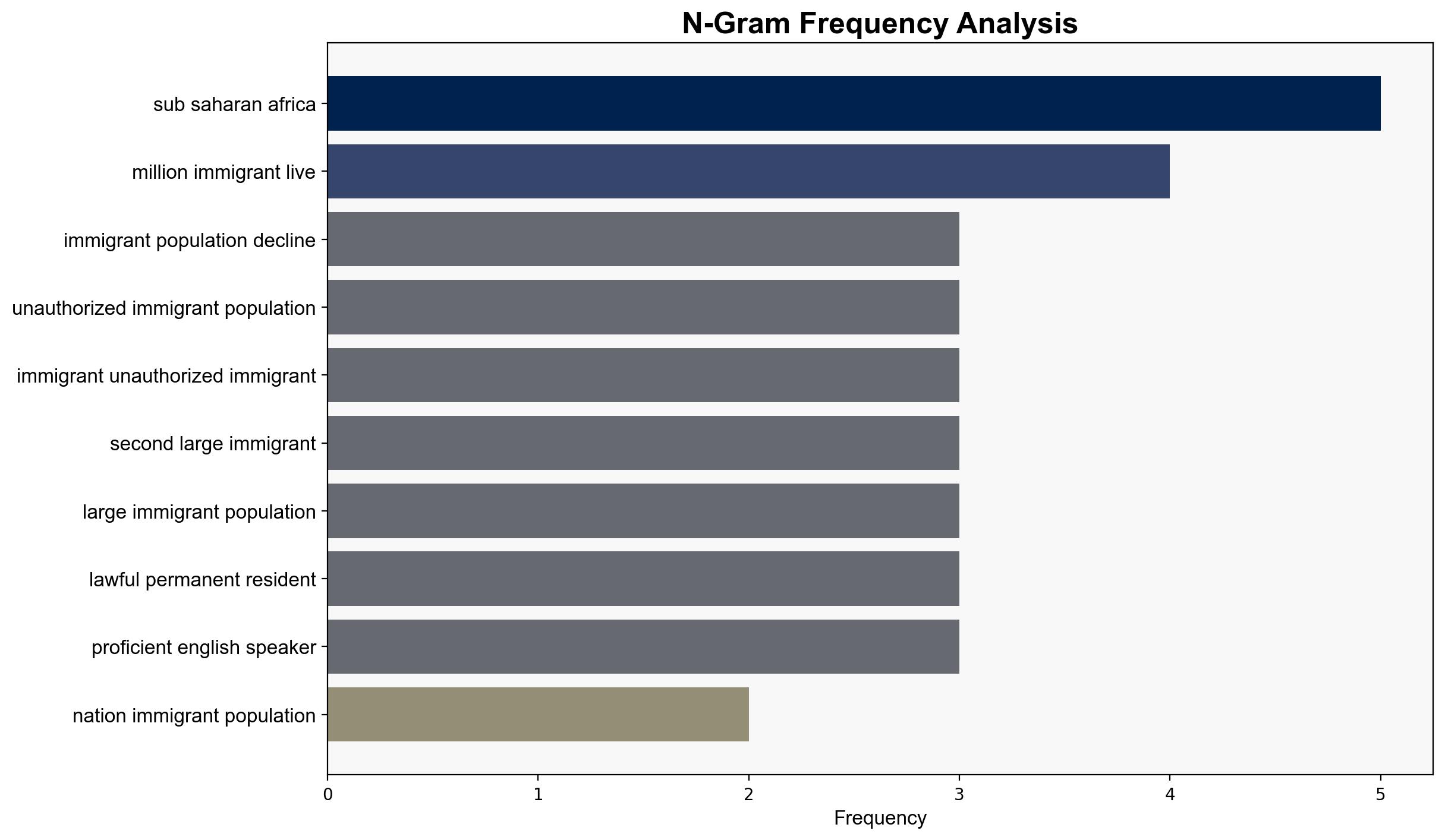What the data says about immigrants in the US – Pew Research Center
Published on: 2025-08-21
Intelligence Report: What the data says about immigrants in the US – Pew Research Center
1. BLUF (Bottom Line Up Front)
The analysis of Pew Research Center data indicates a recent decline in the immigrant population in the United States, potentially driven by policy changes and global migration trends. The hypothesis that policy changes under recent administrations have significantly impacted immigration patterns is better supported. Confidence level: Moderate. Recommended action: Monitor policy impacts on immigration trends and prepare for potential shifts in labor force dynamics.
2. Competing Hypotheses
1. **Hypothesis A**: The decline in the immigrant population is primarily due to recent U.S. immigration policy changes, including asylum restrictions and deportations.
2. **Hypothesis B**: The decline is largely a result of global migration trends and economic factors, independent of U.S. policy changes.
Using ACH 2.0, Hypothesis A is better supported by the timing of policy announcements and subsequent population changes. Hypothesis B is less supported due to lack of specific global economic disruptions correlating with the decline.
3. Key Assumptions and Red Flags
– **Assumptions**: Hypothesis A assumes a direct causal link between policy changes and immigration trends. Hypothesis B assumes global economic factors are the primary drivers.
– **Red Flags**: Potential bias in data interpretation due to political influences. Incomplete data on unauthorized immigrant movements.
– **Blind Spots**: Lack of detailed data on the economic impact of immigration policy changes.
4. Implications and Strategic Risks
– **Economic Risks**: A decline in the immigrant workforce could impact sectors reliant on immigrant labor, affecting economic growth.
– **Geopolitical Risks**: Changes in U.S. immigration policy may strain international relations, particularly with countries of high immigrant origin.
– **Social Risks**: Potential increase in domestic tensions and polarization over immigration policy.
5. Recommendations and Outlook
- **Mitigation**: Develop contingency plans for labor shortages in key industries.
- **Opportunities**: Strengthen international collaboration on migration issues.
- **Scenarios**:
- **Best Case**: Stabilization of immigrant population with balanced policy adjustments.
- **Worst Case**: Significant labor shortages and increased geopolitical tensions.
- **Most Likely**: Gradual adaptation to new immigration norms with moderate economic impact.
6. Key Individuals and Entities
– Joe Biden
– Donald Trump
– Pew Research Center
7. Thematic Tags
national security threats, immigration policy, economic impact, geopolitical relations





